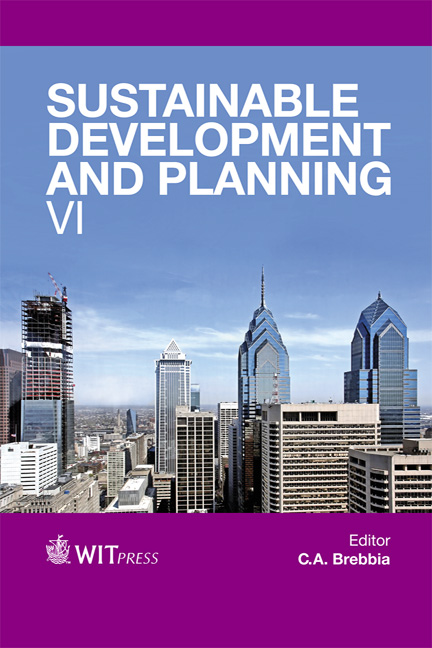A New Paradigm Of Urban Development: Envisioning Sustainable Futures In Qatar
Price
Free (open access)
Transaction
Volume
173
Pages
12
Page Range
299 - 310
Published
2013
Size
955 kb
Paper DOI
10.2495/SDP130241
Copyright
WIT Press
Author(s)
Hatem Galal A. Ibrahim
Abstract
In the past few years and as a result of the dramatic increase in national income that has accompanied the development of the oil industry, Qatar has undergone immense changes in its social, economic and physical environments. In less than half a century, the country has been transformed from a nomadic and subsistence farming economy into a modern urban/industrial society with a per capita income that is considered one of the highest worldwide. As a result, the demographics of the society have become more global and contemporary and international values and attitudes have impacted the existing cultural and architectural patterns. Qatari architectural trends have become increasingly contemporary and completely detached from the traditional ones that reflect the country’s identity. Doha, the capital, has recently witnessed the resurgence of the discourse on Islam as a cultural identity. Qatar’s attractiveness today is generated from its modernized architectural patterns and styles that balance traditionism and modernism. Many of the newly designed buildings are strictly reproducing the Qatari traditional elements and styles.
This paper focuses on understanding the relationship between culture and identity in Qatar. Traditional places where major festivals and cultural social activities take place, within the social and urban fabric of culturally diverse cities. The paper investigates this idea as an approach of maintaining the principles of traditional Qatari architecture while taking advantage of the introduced modern technology. The paper also calls for integrating the identity of the place within the contemporary urban environment of old cities.
Keywords
Qatari architecture language, contemporary architecture, sustainable development, urban environment, cultural identity





